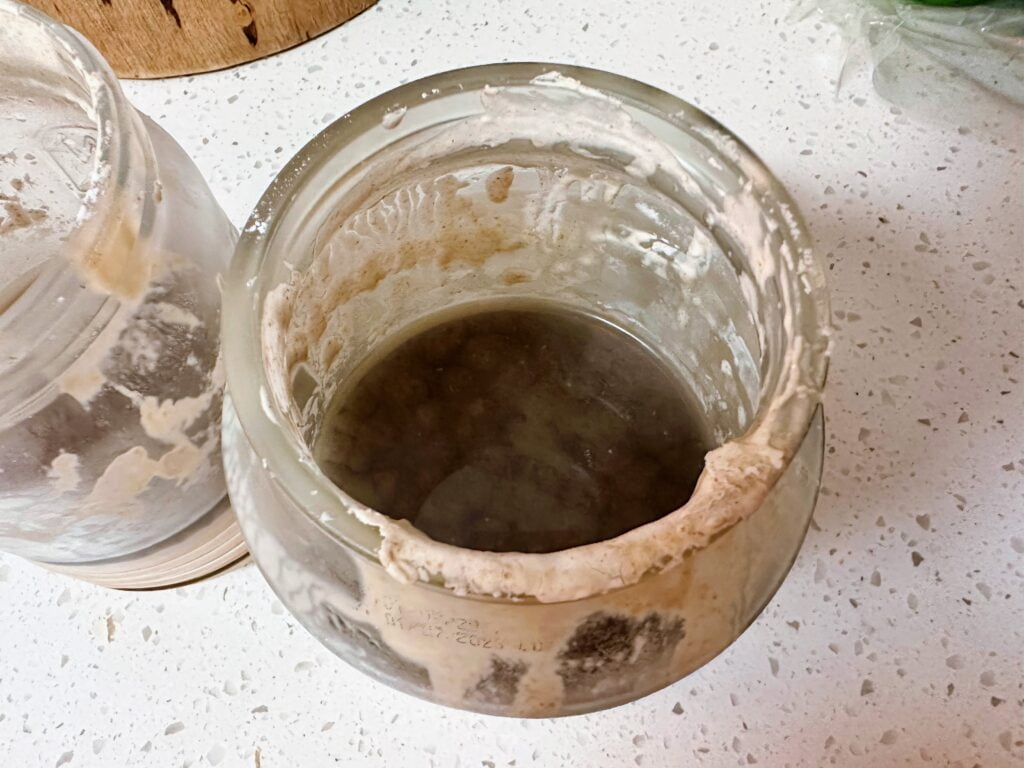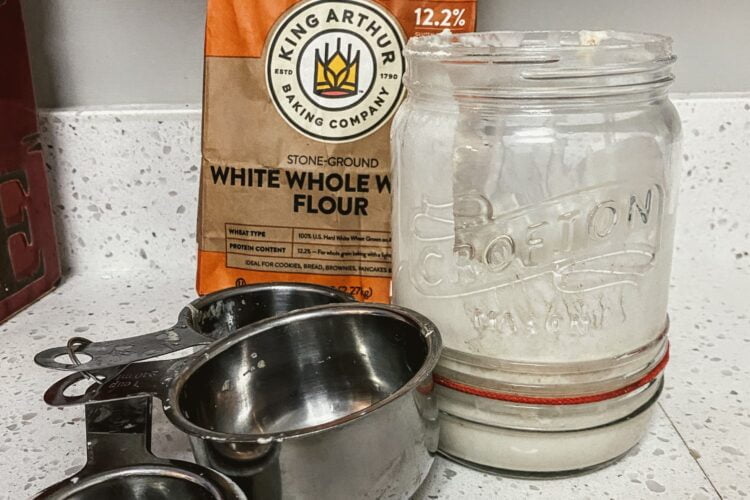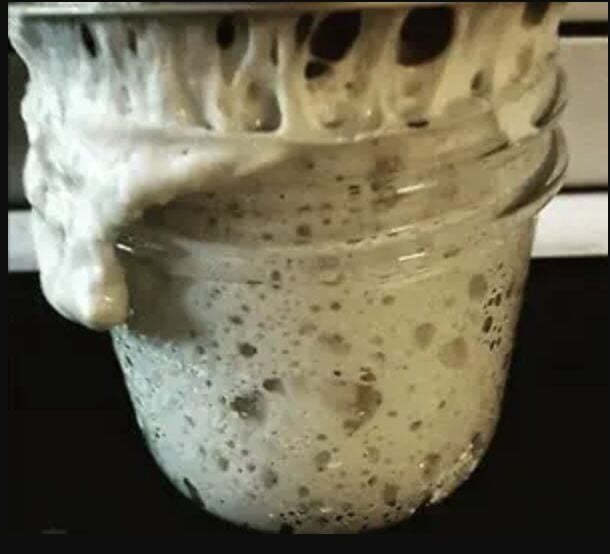It is very frustrating to see your starter not doubling even after you followed directions exactly and everything should go well according to the instructions, but it’s not. Your starter is not doubling and you are not sure what the reason is. I have run into this problem a few times and was able to fix it. Here are 3 reasons why your starter might not be rising, not necessarily in order of importance, but just some things to try.
1. Wrong Flour
What type of flour are you using? Is it bleached? Is it all purpose flour? May be self rising flour? Having the right flour is important and it might be the reason you are having issues with your starter.
Bleached flour: Bleached flour has been treated with chemicals such as chlorine dioxide to whiten it and give it a longer shelf life. However, these chemicals can also harm the natural yeast and bacteria in a sourdough starter, making it difficult for the starter to thrive.
Self-rising flour: Self-rising flour contains added baking powder, which can interfere with the natural fermentation process of a sourdough starter. It is best to avoid using self-rising flour when feeding or maintaining a sourdough starter.
Enriched flour: Enriched flour has added nutrients such as iron and vitamins, which can interfere with the natural balance of yeast and bacteria in a sourdough starter. It is best to use unbleached, unenriched flour when feeding or maintaining a sourdough starter.
Whole wheat flour: While whole wheat flour can be used in a sourdough starter, it can be more difficult for the natural yeast and bacteria to break down the complex carbohydrates in the flour. As a result, a sourdough starter fed with only whole wheat flour may be slower to rise and less active than a starter fed with white flour. It is recommended to use a combination of white and whole wheat flour when feeding a sourdough starter to maintain a healthy balance of nutrients for the yeast and bacteria.
Please refer to our guide for the best flour for sourdough bread
2. Dead Starter

Here are some signs that your starter is dead:
No signs of activity
A healthy sourdough starter should be visibly active, with bubbles forming and the starter rising in volume. There might not be a lot of bubbles, but just look closely, turn your jar around, look on the sides, and see if you can spot any bubbles forming. If you see them – good, you have hope for a healthy starter. If you don’t see any bubbles in your starter – I’m sorry, your starter is dead.
Foul smell
A sourdough starter should have a pleasant, slightly sour aroma. If the starter smells foul or rotten, it may indicate that the starter has gone bad and is no longer active.
Mold growth
If there is mold growing on the surface of the starter, it may indicate that the starter has been contaminated and is no longer active. It is important to discard the starter if there is any sign of mold growth.
Gray or discolored appearance
If the starter has a gray or discolored appearance, it may indicate that the starter is dead. A healthy starter should have a creamy, off-white appearance.
However, if you store your starter in the fridge and its been there for a long time, you will have hooch (liquid that sits on top) formed and it may not look very appetizing. Mine looked grey-ish. In this case, if your starter has been properly stored this whole time in the fridge, it has not gone bad, do not throw it away. You will just need to revive it by feeding it.
Failure to rise
If the starter does not rise or show any signs of activity after feeding it, this may indicate that the starter is dead or weak. If your starter has not shown any signs of activity in 48 hours – I have bad news for you.
3. Too Cold
The corner where your starter sits might be too cold. Try to get your starter to a corner where it’s at least 70 degrees. You can keep your starter at a lower temperature, but keep in mind your starter doubling times depend on a temperature it sits in. In warmer kitchens it will take less time for the starter to double and in colder kitchen it will take longer for the starter to double.
Temperature has a significant impact on the fermentation process of sourdough starter. The temperature affects the activity of the yeast and bacteria in the starter, which in turn affects the rate of fermentation.
At lower temperatures, the fermentation process will be slower, as the yeast and bacteria will be less active. Conversely, at higher temperatures, the fermentation process will be faster, as the yeast and bacteria will be more active.
The optimal temperature for sourdough fermentation is generally considered to be between 75-85°F (24-29°C). At this temperature range, the fermentation process proceeds at a moderate pace, producing a balanced sourdough flavor and aroma.
If the temperature is too low, the fermentation process will be very slow, and it may take much longer for the starter to mature. In contrast, if the temperature is too high, the fermentation process will be rapid, and the starter may over-ferment, resulting in a sourdough with a strong and unpleasant sour taste.
Overall, the temperature plays a critical role in the fermentation process of sourdough starter, and it is important to maintain a consistent and appropriate temperature for optimal fermentation.
I hope you are able to find out what is wrong and revive your starter. If you want to try and make your own starter, see our guide:
If you want a starter that is very hard to kill. And believe me, I accidentally tried, by leaving it in the fridge for a few months without feeding, I suggest purchasing one. I found this bubbly one on amazon:
It came fairly quick, in a small container with instructions on how to feed it for the first few days, and I’ve had this starter ever since. Highly recommend!







[…] 3 Reasons Your Starter Is Not Doubling […]